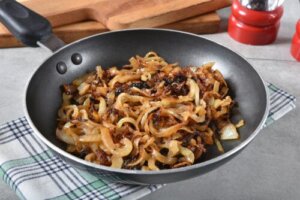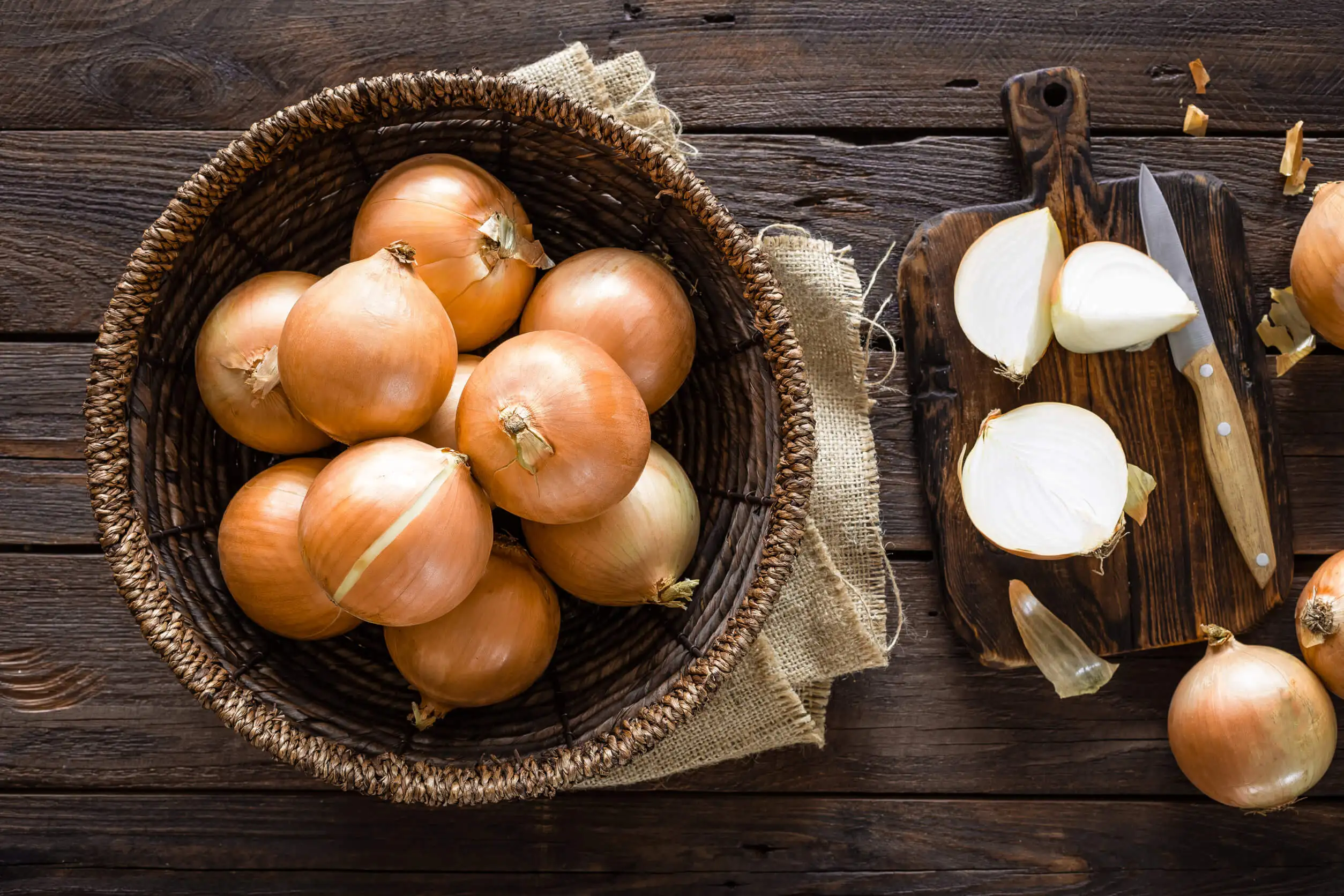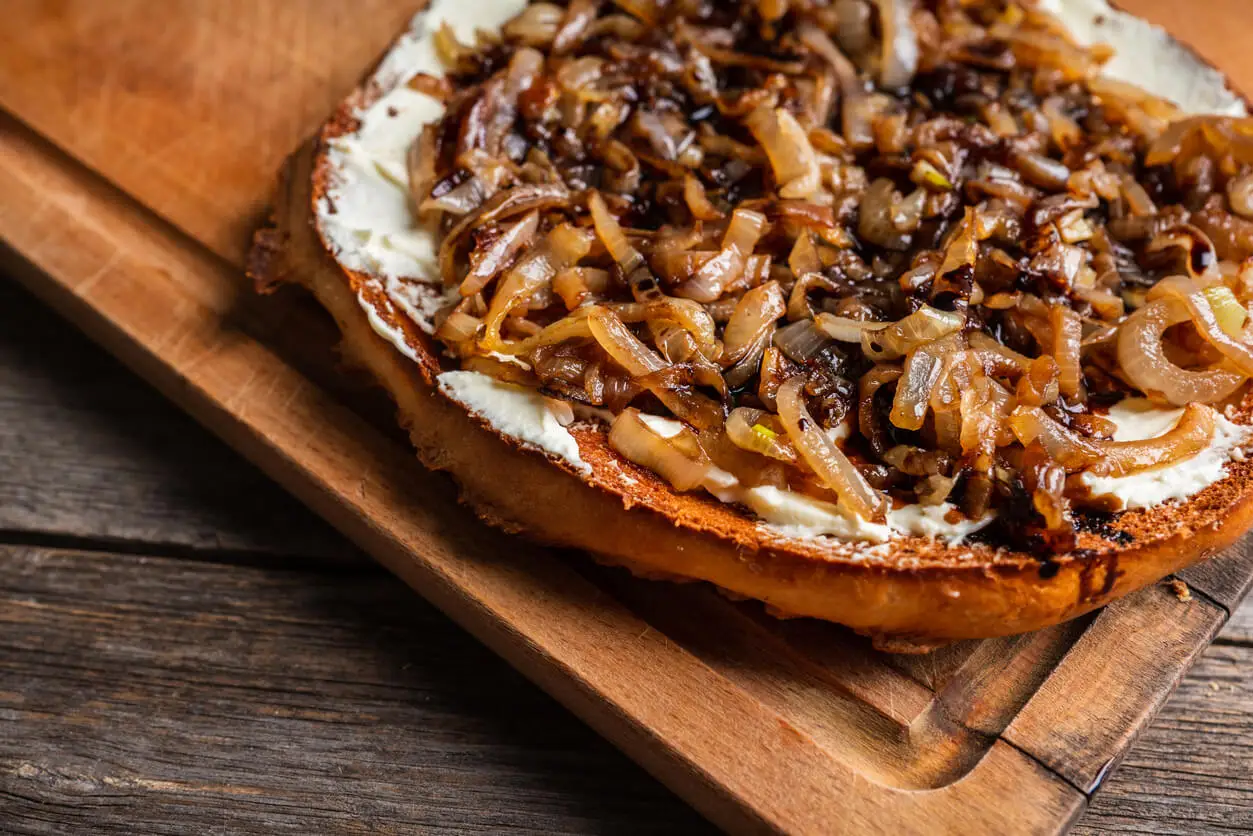How to Prepare Caramelized Onions Without Sugar


Reviewed and approved by the nutritionist Maria Patricia Pinero Corredor
Preparing caramelized onions without sugar is possible, as this food already contains its own carbohydrates, which are released thanks to certain reactions that take place when it’s cooked over a low heat.
In this way, we’ll obtain a delicious side dish that we can eat without feeling guilty! In fact, only natural products are used in its preparation and it’s relatively low in calories.
Caramelized onions: a luxury side dish
Onion is one of the natural products with the most properties and health benefits. It’s used as an expectorant, diuretic, digestive and to help maintain the proper functioning of the cardiovascular system, according to the results of various studies.
It also has applications from an aesthetic point of view, as it’s rich in minerals, and is used to make masks to nourish the skin. And you can even make onion shampoo.
It’s also an irreplaceable ingredient in the kitchen. It can be consumed raw or in salads. It’s added to stews, giving an incomparable flavor. Among the most delicious hors d’oeuvres are onion rings.
In short, the recipes that include this vegetable are endless.
In particular, caramelized onions is an especially popular side dish used as a garnish in a variety of dishes. It goes well with an omelet, with meats, with cheeses, in a hamburger, a sandwich, a quiche, and even with just a slice of bread!
If you want to know more, take a look at this: Black Onion: Nutritional and Health Benefits
How to prepare caramelized onions without sugar?
The answer to this common question could not be more emphatic: of course yes. And, in fact, it must be clarified that the original recipe is prepared without this ingredient.
It may be a common mistake to think that caramelizing requires the use of sugar or any other sweetening ingredient. However, the sweet flavor and the characteristic brown tone of this preparation are obtained thanks to the properties of the vegetable itself.
In the first moment of cooking, the onions lose much of their water. As a result of this, they become soft and lose volume. Likewise, begins to release its recognizable aromas and flavors.
Then, when there is almost no water left, the temperature increases, and caramelization and, in most cases, the Maillard reaction begins.
The latter is a natural chemical process. It occurs in foods that contain carbohydrates and proteins when they are subjected to the action of heat. We owe it to the appearance of the brown color and some of the most appreciated flavors and aromas.
Then, all you have to do is wait until you get to the right cooking point and enjoy this onion that is as delicious as it is easy to prepare. Take note, you will surely love it.

Here’s how to make it
Preparing sugar-free caramelized onions is a simple process. However, it requires full attention at every stage.
1. Choosing the onions
Of course, we must select and buy some nice onions. The bigger and fresher, the better.
It’s important to make sure that they don’t have bruises, damaged parts, or holes. It is important to pay attention to the smell, as the smell can reveal if it’s beginning to decompose.
There are several types of onions: yellow, purple, French onions, and spring onions. For the recipe we are going to prepare, white onions are recommended. This isn’t only because they’re the largest, but, together with the purple ones, they’re the ones that contain more natural sugar.
2. Wash them well
Although we’re going to use the inner layers, it is advisable to wash all the food well. Especially because they grow in the soil and may have come into contact with various chemicals.
3. Peel and cut them
First, cut the onion crosswise, leaving four large portions. The first layer or two, i.e. the outermost layers, are removed or discarded. Then, cut the onions into julienne strips, making sure they aren’t too thin.
4. Heat the oil and the onion
Put the frying pan or wok over a low heat and pour in the olive oil. Once the oil is hot, add the chopped onion.
Make sure that the julienne strips are well spaced out so that they don’t clump together. Then, sprinkle the salt. Keep the flame low throughout the preparation process.
5. Caramelization
At first, when the onion begins to lose water, it will look transparent. But then, the water evaporates and this is when caramelization begins, where it turns from white to golden brown. Then, the sugars are released, giving the characteristic flavor and aroma of this recipe.
The process takes time, about two and a half hours. Patience is required. There are recipes that don’t take as long. During the first hour, it’s necessary to turn the julienne strips every now and then, using a wooden spoon. In the same way, you must ensure they’re all cooked and browned equally.
And, in the last hour of the process, the attention must be greater, as you can’t let them burn. The golden hue will change to a caramel color, a little darker. The texture will also change, feeling soft. This indicates that the sugar-free caramelized onions recipe is ready.
6. Storage
Drain the excess oil and store them in a sterilized glass container, to be consumed when desired. They can be kept easily for up to a week.

Some tips and recommendations
Apart from the above indications, there are situations to pay attention to when preparing sugar-free caramelized onions, so that the quality of the product is guaranteed. Among the recommendations to be taken into account are the following:
- If you notice that the onion is drying out, a little water can be added.
- A pinch of bicarbonate, added when it’s finishing the caramelization process, helps to preserve it a little more.
- Another optional ingredient that can be added is vinegar: a teaspoon can enhance its flavor, giving it a slightly sweet and sour touch.
- Some people also prefer to add oregano or other spices, such as black pepper, for a more explosive flavor.
- Caramelized onion without sugar reduces its volume quite a bit. So take precautions and always calculate a little more than you think you will need.
- When it’s time to serve, heat it up a bit and it’ll taste as if it were freshly prepared.
You may also be interested in: Delicious Baked Sea Bass with Potatoes and Onion
To enjoy caramelized onions without sugar
The preparation of caramelized onions isn’t very complicated, although the process is a bit long. You need to watch them carefully so they don’t burn and come out just right.
There are several dishes that will enhance their flavor if we accompany them with a portion of sugar-free caramelized onion. The best thing is that you can enjoy it without feeling guilty, as it’s a relatively low-calorie food: 187 calories in a 100-gram (4 oz) serving. In comparison, a slice of cake has more than 300.
Another advantage of this dish is that you use natural ingredients with no added sugar. This is great for people who are following diets (including ketonic or keto diets), as well as for those living with diabetes.
In this regard, there’s research that has determined that onion has hypoglycemic effects. In this sense, it’s considered that it can be used as a dietary supplement in the management of type 1 or type 2 diabetes mellitus. For all these reasons, it’s now also proposed to implement sugar-free caramelized onion as a healthy snack.
All cited sources were thoroughly reviewed by our team to ensure their quality, reliability, currency, and validity. The bibliography of this article was considered reliable and of academic or scientific accuracy.
- Augusti, K. T. (2020). Therapeutic and medicinal values of onions and garlic. In Onions and allied crops (pp. 93-108). CRC press. https://www.taylorfrancis.com/chapters/edit/10.1201/9780429355752-5/therapeutic-medicinal-values-onions-garlic-thomas-augusti
- Jaramillo, S., Jaramillo, J., & Jaramillo, A. (1997). Estudio fenológico de tres tipos de cebolla de bulbo Allium cepa L. Acta Agronómica, 47(3), 16-23. https://revistas.unal.edu.co/index.php/acta_agronomica/article/view/48195
- Peña, D. G. (2017). Evaluación metabolómica del efecto de cebolla procesada en la prevención de enfermedad cardiovascular y hepática en un modelo de hipercolesterolemia inducida por la dieta (Doctoral dissertation, Universidad Complutense de Madrid). https://dialnet.unirioja.es/servlet/tesis?codigo=122956
- Velandia Bermúdez, C. I. (2018). Plan de negocios para la creación de una empresa que produzca y comercialice snacks de aros de cebolla caramelizada. https://repositorio.udes.edu.co/entities/publication/def7bec2-b6ff-4528-bdea-e3115e1c741b/full
- Voyer, L. E., & Alvarado, C. (2019). Reacción de Maillard: Efectos patogénicos. Medicina (Buenos Aires), 79(2), 137-143. http://www.scielo.org.ar/scielo.php?pid=S0025-76802019000300008&script=sci_arttext&tlng=en
- Zhao, X. X., Lin, F. J., Li, H., Li, H. B., Wu, D. T., Geng, F., … & Gan, R. Y. (2021). Recent advances in bioactive compounds, health functions, and safety concerns of onion (Allium cepa L.). Frontiers in Nutrition, 8, 669805. https://www.frontiersin.org/articles/10.3389/fnut.2021.669805/full
This text is provided for informational purposes only and does not replace consultation with a professional. If in doubt, consult your specialist.








